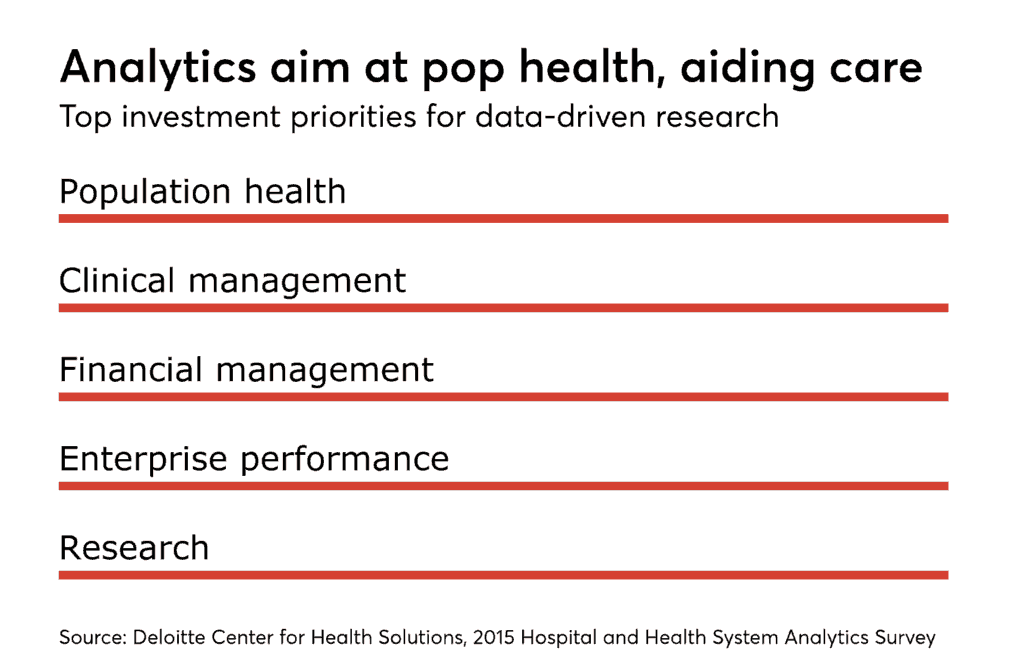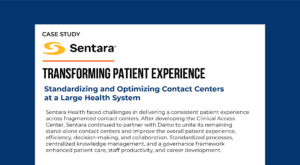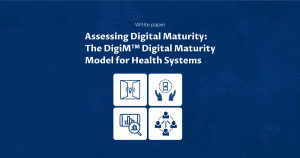How to Align Stakeholder Groups in Enterprise Digital Transformation

Healthcare CIOs are deeply involved in enterprise digital transformation today, with many either carrying the additional responsibility of Chief Digital Officer or transitioning into the role full time.
Digital transformation requires reimagining patient and caregiver experiences and driving operational efficiencies through automation. However, while digital transformation is primarily IT-enabled, it’s not the same as IT-led.
One of the fundamental tasks of a Chief Digital Officer is to recognize where ownership lies for digital priorities in the organization, and how to gain alignment across the groups that have ownership. CIOs who lead digital transformation must ensure that enterprise digital transformation is not seen as an “IT” initiative—or at least, not just an IT initiative.
Here are some examples of the variations across enterprises, and how they could align around enterprise digital transformation.
Enterprise analytics: While analytics often sits in the IT function, it is also often a standalone enterprise function, or one that sits inside another function, such as the CFO organization. Even within the definition of enterprise analytics, routine reporting for quality metrics may sit in one function while advanced analytics groups that focus on building artificial intelligence (AI) and machine learning tools may be led by a Chief Analytics Officer (CAO) in a separate group.
Enterprise data management: Ownership of enterprise data and the management of the data often sit in different parts of the enterprise. CIOs usually have ownership of core datasets such as EMR data, but may not have ownership or control of other data sets. An example would be third-party consumer data which is licensed and used primarily by and for marketing. Further, while the ownership of the data may lie within a function, the responsibility for the infrastructure to host and manage the data may be part of the CIO organization. The advanced analytics function responsible for developing predictive models on patient health outcomes may sit in yet another part of the enterprise.
Patient experience: Many health systems have appointed Chief Patient Experience Officers, and the role often reports directly to the CEO. The patient experience officer’s role involves creating alignment across the various functions that touch the patient during various stages of a typical patient journey—such as marketing, patient visits, payment and collections—and requires IT-enablement to streamline the workflows and create superior experiences for the patient.
Innovation: Many healthcare enterprises have set up innovation groups that are typically stand-alone organizations tasked with a range of objectives:
- To foster and commercialize innovations within the enterprise
- To create and promote innovation ecosystems
- To generate new revenue streams through equity participation and royalty agreements
Given these objectives, the Chief Innovation Officer often has a set of goals that do not directly align with enterprise digital transformation. However, innovation groups can be great sources of new ideas and solutions for reimagining patient and caregiver experiences and therefore, a critical enabler for digital transformation.
Other aspects that impact enterprise digital transformation include departmental purchase of IT solutions (shadow IT as it is often referred to) and lack of standardization of technology platforms (often exacerbated by M&A activity), to name just a couple.
Notwithstanding the variations in organizational models, several technology components required for enterprise digital transformation sit in the CIO organization today. These include enterprise IT infrastructure, application development, information security, and systems integration.
While CIOs have taken on the mantle of Chief Digital Officers in many healthcare enterprises, the role of Chief Digital Officer is emerging as one that requires cross-functional expertise that goes beyond IT and includes innovation management and experience design that are characteristic of systems of engagement that directly impact revenues and customer satisfaction. In many enterprises, Chief Digital Officers are emerging from business leadership with a broad and deep understanding of how the enterprise operates.
In my firm’s work with healthcare enterprises, we have seen several best practices in achieving the organizational alignment required for successfully implementing digital programs. Here are some of them.
They have an enterprise vision and roadmap: Most healthcare enterprises today are implementing digital as stand-alone, often departmental programs. While this approach allows organizations to move faster, enterprise adoption becomes a challenge in the absence of an organizational champion with an overarching vision and a clear roadmap for implementation. The departmental/ functional approach can also often create redundancies such as duplicate purchases of software licenses and suboptimal technology architecture choices. An enterprise digital roadmap streamlines and prioritizes initiatives across the organization, often by folding in existing investments into the roadmap, and ensures all-round alignment.
They involve stakeholders early: The most successful digital programs involve cross-functional stakeholders early and give them an opportunity to weigh in with their expectations from digital transformation. There are several ways to achieve this such as internal surveys, focus group discussions, and one-on-one interviews with key stakeholders. Stakeholders appreciate the opportunity to have a voice in shaping the digital transformation vision and roadmap, and moreover provide valuable inputs on best practices at other enterprises in their fields. Early involvement also ensures stakeholder buy-in which is critical for the success of the program. Following a transparent process for outlining digital transformation priorities and inviting feedback from stakeholders are key enablers for winning support and ensuring successful implementation of digital programs.
They take inputs from key technology vendors/ partners: Technology firms bring a wealth of knowledge from their work across industry sectors and can bring best practices from sectors that are further along in digital transformation, especially around architectural choices, experience design and advanced analytics, which are important topics for healthcare today. These inputs provide independent validation for the enterprise digital roadmap and win the confidence of internal stakeholders. In addition, technology vendors that are currently serving a healthcare enterprise often have insights on the organizational and process issues within the enterprise that can be valuable inputs for a digital roadmap.
Digital transformation is a multi-year, ongoing commitment by enterprises looking to position themselves for success in the future. Healthcare is in the early stages of this transformation. By ensuring alignment with a broad range of stakeholders across the enterprises, Chief Digital Officers can successfully lead the organization’s digital journey.
Originally published on healthdatamanagement.com














